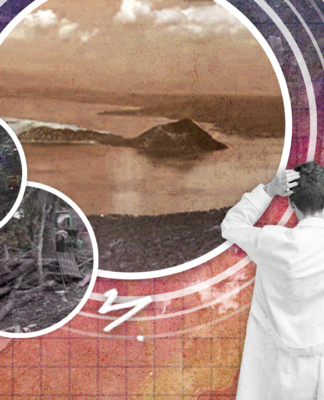FILIPINOS tend to endure body pains for various reasons.
This was the observation made by Thomasian anesthesiologist Dr. Jocelyn Que, the first Filipino overseas-trained expert in Pain Management.
“Some Filipinos endure pain because they believe it is a sort of atonement for their sins, while unfortunately some bear the pain because they avoid costly medication,” Que told the Varsitarian. “Pain is commonly experienced by the vulnerable population which includes the children, women, and the elderly.”
But now that the relatively new field of pain management is slowly making some headway in the country, Filipinos need not to endure pain for long.
Pain management, according to Que, aims to reduce the pain to comfortable levels so that the patient can function normally.
Pain is generally untreated worldwide and most of the time, its treatment is only secondary to the sickness of a patient, she said.
“We can manage pain and at the same time diagnose its cause. There are times when pain is the main presenting symptom but the doctors may not be able to find out its cause just yet,” she said. “So while investigating the case, we should alleviate the pain experienced by our patients.”
Fifteen years ago, a group of Thomasian anesthesiologists initiated the establishment of UST Hospital Pain Management Unit in the University but its development was hampered by the lack of attending specialists.
Common cases being treated in the Pain Unit nowadays involve back pains on the lower extremity, usually experienced by working individuals, she said.
Que said that if the pain lingers for a long time, pain specialists can offer interventional pain management such as steroids injections.
Just recently, Que treated an 84-year-old man who was suffering from severe back pain because of a dislocated spine. “After exhausting all the possible medications, we resorted to performing epidural steroids injection which proved to be effective anyway,” she said.
Recognition
Que obtained her masters’ degree and hands-on clinical studies at the University of Sydney in Australia.
“It was all a rewarding experience for me. I focused on studying the three P’s of pain management: principles, processes and people,” she said.
When she got back from her clinical training in 2005, her first patient was a seven-year-old girl who was suffering from a fast-growing cancer in her brain.
“When the girl screams in pain, you can hear her in the whole corridor of the hospital,” she said. “Fortunately she responded to our pain medications and was able to have good night sleeps. I saw her two months ago and she is back in school already.”
Pain management is slowly being recognized in the Philippines. The Philippine General Hospital and St. Luke’s Medical Center are offering fellowship trainings. But she believes that the country needs long-term studies which can yield experts in the field.
“The fellowship trainings are not enough because they are not fully multi-disciplinary and interventional procedures cannot be taught and learned easily,” she said.
Que, who is now director of the UST Faculty of Medicine and Surgery Center for Pain Medicine, said that the University, in partnership with the University of Sydney, will soon be offering a Masters’ Degree in Pain Management which will be the first in the Philippines and in Southeast Asia.
“The curriculum to be used for the program is the one offered in the University of Sydney. In this project, we can bring pain medicine closer to more doctors because the cost of studying it here will be less than what I spent for my study abroad,” she said.














